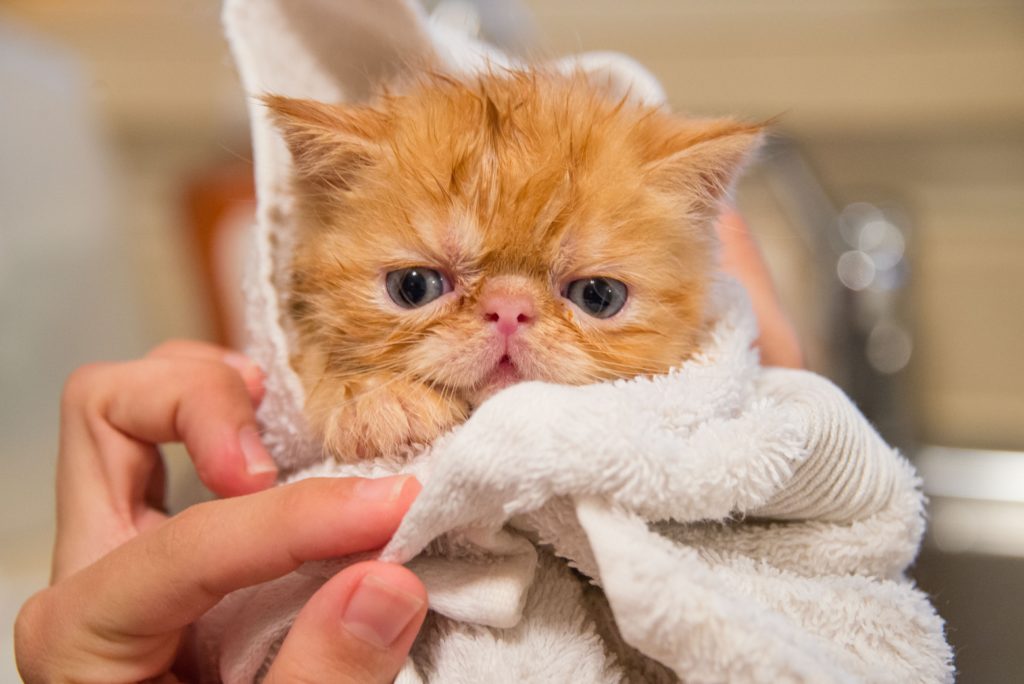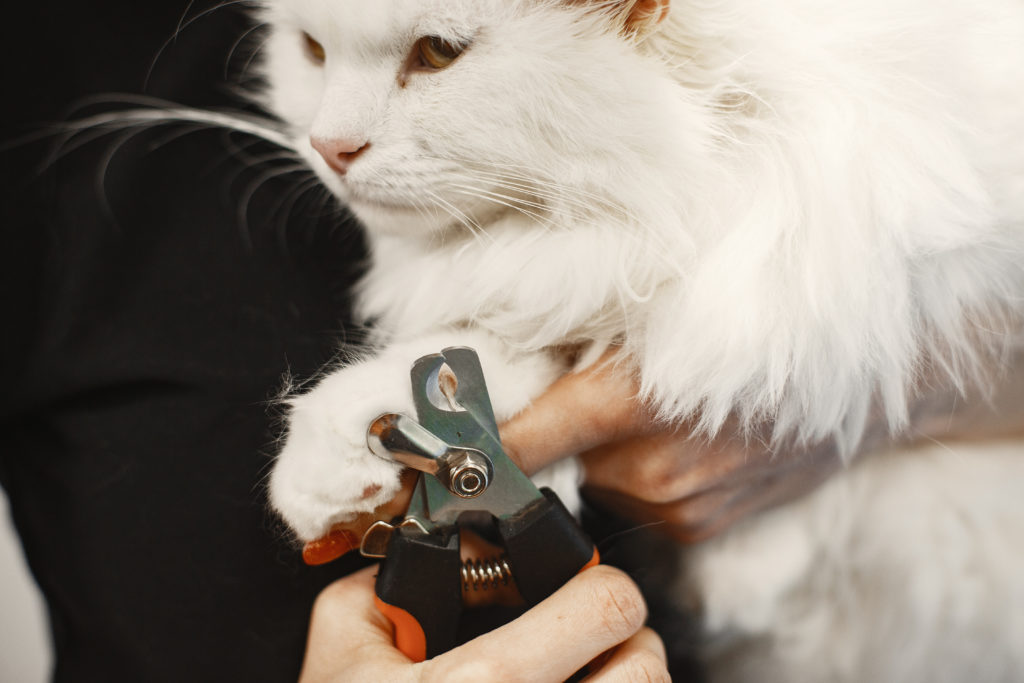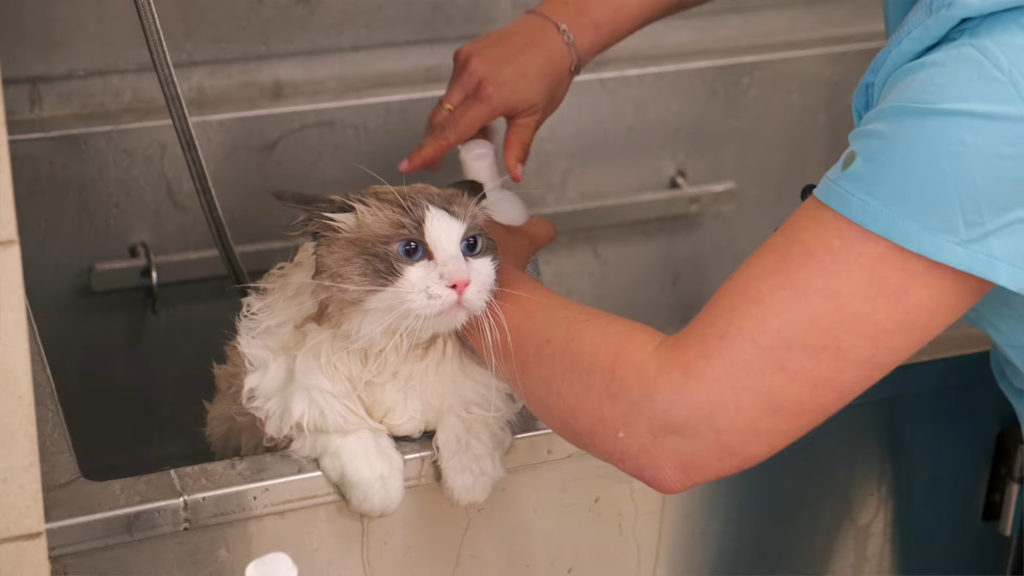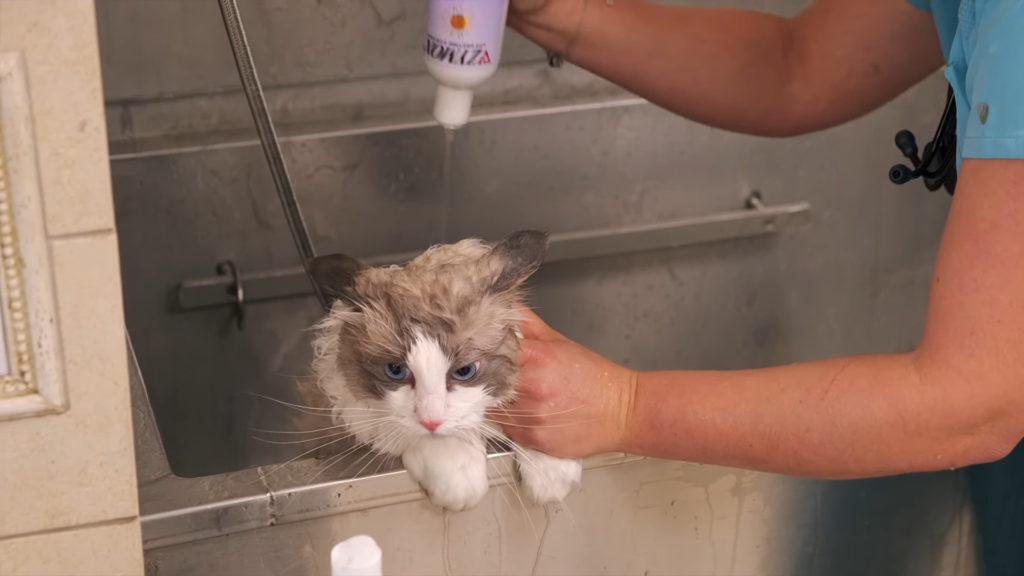Bathing cats can be a challenging task for many pet owners without proper bathing techniques. Cats are known for their aversion to water and their ability to groom themselves. However, there are certain situations where cat washing becomes necessary, such as when a cat gets into something dirty or sticky, has fleas or parasites, has skin problems or allergies, or has long hair that gets matted easily.
In this blog post, we will provide six essential tips for bathing cats, ensuring a stress-free and successful bathing experience for you and your feline friend.
1. Choose the right time for cat bath

To ensure that bathing becomes a positive experience for your cat, you have to choose the right time. If they are too alert or irritable, things can go south quickly, so it’s best to do this when they’re more mellow and tired. You can also schedule the bath around your cat’s natural grooming routine, such as after a meal or a nap.
Choosing the right time can significantly affect how your cat reacts to the bath. For example, if you try to bathe your cat when hungry or playful, they may be more likely to resist or escape. On the other hand, if you wash your cat when they are full or sleepy, they may be more relaxed and cooperative.
2. Preparing for the Cat Bathing
Before you start your cat bathing, you must gather the necessary supplies and choose the right place. Here are some of the things you will need:
Cat-friendly shampoo: You should never use human shampoo on your cat, as it can dry their skin and cause irritation. Instead, use a mild shampoo specifically formulated for cats, preferably one that is unscented or has a natural scent your cat likes. You can find cat shampoos at pet stores or online.
Towels: You will need at least two towels to dry your cat after the bath and wrap them in if they get cold or scared. It would be best to use soft and absorbent towels that are large enough to cover your cat’s body.
To prevent your cat from slipping and sliding in the water, place a non-slip mat in the sink or tub where you will bathe it. You can use a rubber mat or a towel to create traction for your cat’s feet.
Brush or comb: You should brush your cat’s fur before the bath to remove tangles or mats that can make the bathing process harder. This will also help reduce shedding and make your cat’s skin softer and shinier. You should use a brush or comb suitable for your cat’s hair type and length.
Treats or rewards: You should have some treats or rewards ready to offer your cat during and after the bath. This will help them associate bathing with something positive and make them more cooperative. It would help if you used healthy and tasty treats for your cat, such as tuna flakes or chicken bits.
Choosing a quiet and calm area to bathe your cat would be best, such as a bathroom or a laundry room. Ensure the room is warm enough for your cat, and avoid distractions such as loud noises or other pets.
3. Getting Your Cat Ready
Before you put your cat in the water, you must prepare them for the bath. Here are some steps you should follow:
Brush your cat’s fur: You should brush your cat’s fur thoroughly before the bath to remove any tangles or mats that can make the bathing process harder. This will also help reduce shedding and make your cat’s fur softer and shinier. You should use a brush or comb suitable for your cat’s hair type and length.

Trim your cat’s nails: You should trim your cat’s nails before the bath to reduce the risk of scratches if they try to escape or resist. You can use a nail clipper designed for cats or ask a professional groomer or veterinarian to do it. It would be best if you trimmed only the tip of the nail, avoiding the quick (the pink part that contains blood vessels and nerves).

Introduce your cat to water gradually: You should not just throw your cat into the water, as this can scare them and make them hate bathing. Instead, it would be best if you introduced them to water gradually by getting them used to the sound of running water and using a damp cloth to wipe their fur gently.
Introducing your cat to water gradually can help them overcome their fear of water and make them more comfortable with the bath. For example, you can start by letting your cat hear running water from a faucet or a showerhead. Then, you can use a damp cloth to gently wipe their fur with water, starting from their head and moving down their body. You can also let them sniff and lick the water from the cloth or your hand.
4. The Bathing Process
Once your cat is ready, you can start the bathing process. Here are some tips for bathing a cat to follow:
Use lukewarm water: You should fill the sink or tub with a few inches of lukewarm water that is comfortable for your cat. You should never use hot or cold water, which can shock or burn your cat’s skin. You can use a thermometer to check the water temperature or test it with your elbow or wrist.
Wet your cat’s fur: You should use a cup or a handheld showerhead to wet your cat’s hair gently and slowly, avoiding their ears and eyes. You can also use a cotton ball to plug their ears if needed. You should wet your cat’s fur from the neck, leaving their head dry. This will help prevent water from getting into their ears and eyes, which can cause infections or irritations.

Apply cat-friendly shampoo: You should use a small amount specifically formulated for cats and gently massage it into your cat’s fur, avoiding their face. You can use a soft brush or sponge to help spread the shampoo evenly. It would be best never to use human shampoo on your cat, as it can dry out their skin and cause irritation.

Rinse thoroughly: Using clean water, you should rinse all the shampoo from your cat’s fur. Leftover shampoo can cause skin irritation or allergic reactions in your cat. You can use a cup or a handheld showerhead to rinse your cat’s hair gently and slowly, avoiding their ears and eyes.
The bathing process should take at most 10 minutes, as more prolonged exposure to water can stress out your cat and lower their body temperature. It would be best if you also were careful not to get soap or water in your cat’s mouth or nose, as this can cause choking or suffocation.
5. Drying and Post-Bath Care
After bathing your cat, you need to dry them and take care of them. Here are some steps you should follow:
Use a towel to dry your cat: You should gently pat your cat’s fur with a towel to remove excess water. You should avoid rubbing vigorously, which can cause tangles or damage to your cat’s skin. You can also wrap your cat in a towel if they get cold or scared.

Consider using a hairdryer: You can dry your cat’s fur faster and more thoroughly, but only if your cat is comfortable. You should use the lowest heat setting and keep it safe from your cat’s skin. You should also gradually introduce your cat to the noise and sensation of the hairdryer before using it on them.
Reward your cat: You should offer your cat some treats or praise to reinforce their positive behavior during and after the bath. This will help them associate bathing with something positive and make them more willing to do it again.
Drying and post-bath care are essential to ensure your cat’s health and well-being after the bath. For example, drying your cat correctly can prevent them from getting hypothermia or catching a cold. Rewarding your cat can also help them feel relaxed and happy after the bath.
6. Dealing with Challenges
Among the cat grooming, bathing cats can be challenging, and you may encounter some difficulties along the way. Here are some tips to deal with some common challenges:
Handling a fearful or aggressive cat: If your cat is too afraid or aggressive to bathe, you may need to consult a professional groomer or veterinarian for advice or assistance. They may be able to clean your cat safely and effectively or prescribe some medication or sedation to calm your cat down. You can also consider using a cat muzzle or seeking assistance from another person to restrain your cat if necessary.
Dealing with excessive scratching or biting: If your cat scratches or bites you during the bath, you should try to trim their nails before the bath and use a towel or a grooming bag to restrain them if necessary. You should also wear gloves and long sleeves to protect yourself from injuries. You should never punish your cat for scratching or biting, as this can make them more fearful or aggressive.
Dealing with challenges can be frustrating and stressful for both you and your cat, but you should not give up on bathing them. Instead, you should try to understand the reasons behind their behavior and find ways to make them more comfortable and cooperative.
FAQs
Most cats do not need regular baths, as they can groom themselves effectively. However, there are certain situations where bathing becomes necessary, such as when a cat gets into something dirty or sticky, has fleas or parasites, has skin problems or allergies, or has long hair that gets matted easily.
To clean a cat at home, you must gather the necessary supplies, choose the right time and place, get your cat ready, wet their fur, apply shampoo, rinse thoroughly, dry them, and reward them. You should also follow some tips to make the experience more comfortable and stress-free for you and your cat.
To clean your cat so it’s not difficult for her, introduce her to water gradually, use lukewarm water and cat-friendly shampoo, be gentle and careful, avoid getting water in her ears and eyes, and offer her treats or praise. It would be best if you also chose a quiet and calm area where she feels safe and comfortable.
To clean a cat without getting shot, trim its nails before the bath, use a towel or a grooming bag to restrain it if necessary, wear gloves and long sleeves to protect yourself, and be patient and calm. You should also consult a professional groomer or veterinarian if your cat is too fearful or aggressive to bathe.
Conclusion
Bathing cats doesn’t have to be a daunting task. Following these six essential tips can make the experience more comfortable and stress-free for you and your feline friend. Remember to be patient, use positive reinforcement, and prioritize your cat’s safety and well-being. With the right approach, bathing can become a bonding experience that strengthens your relationship with your cat.
References:
- Grooming Your Cat – Purple Cat Vet.
- Bathing Your Cat | Clermont Animal Hospital.
- How to Bathe a Sphynx Cat (with Pictures)
With a passion for cats and years of experience in cat care and grooming, I have gained valuable insights and expertise that I want to share with other cat lovers. I believe that every cat deserves the best care possible, and through this platform, I aim to empower cat owners like you to provide the utmost love and care for your feline companions.



